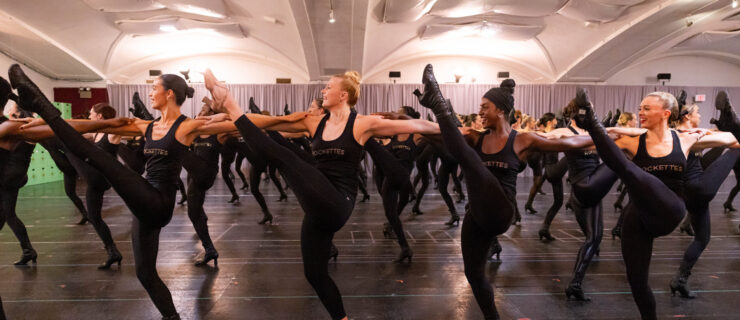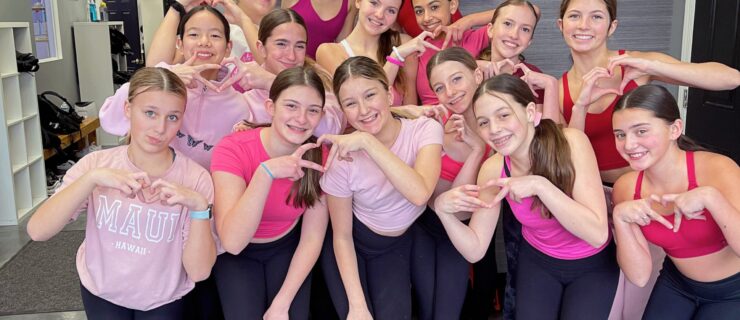How to Choreograph on Nondancers
It seems like it should go without saying: Choreographers create on dancers…right? Right—except when they don’t. Depending on your career path as a choreographer, you may end up working with nondancers frequently. Actors, models, and even pop stars often lack the level of dance training that makes performing movement look effortless. But think of your job as an exciting challenge, and you’ll be able to create something that looks great on everybody involved.
Break the Ice
Remember that your nondancers are probably nervous about learning choreography. To ease their fears, keep things upbeat from the get-go. “Right away, make it clear to them that you’re all there to have fun, and nobody’s worried about them dancing ‘badly,’ ” says Katie Rose McLaughlin, associate choreographer for Hadestown and director of Designated Movement Company. Setting a positive tone will help keep things relaxed when people inevitably struggle with certain steps or movements.

McLaughlin leading rehearsal (Daniel Robinson, courtesyMcLaughlin)
Read the Room
When working with nondancers, enter each rehearsal with both a game plan and a willingness to be flexible. “I always tell people that I come in with ideas, try them, and then scrap them if they don’t work. I strongly believe in using the tools at your disposal,” McLaughlin says.
Once you’re in the studio, identify the most experienced movers, and set them up to help those who are less dance-inclined. Megan Mizanty, assistant professor of dance at Wilson College, runs a student dance company that’s open to trained and non-trained dancers. “I give stronger dancers leadership roles so they can get invested in the process,” she says. “Then, nondancers have someone to look up to.” McLaughlin uses a similar tactic when she choreographs for musical theater. “I like to have assistants or associates rehearse with me and dance alongside the cast as they learn,” she says. If you’re working with all newbies, ask them to rehearse choreography in small groups so it’s less intimidating.
Get Moving
It’s not realistic to expect nondancers to be able to bust out headspins or complex partnering by the end of a short rehearsal process. So how do you create something that looks like “dance” when your performers lack technical training? Mizanty likes to access her performers’ natural ways of moving by playing improvisational games with them and giving them creative prompts. “Start with movements that they’re used to,” she says. “You can show people that they already have a movement vocabulary.”
McLaughlin always tells her cast about her process before she starts choreographing, so they can make their own contributions. “I create a sketch, and the fine details come from the performers,” she says. “If you can harness the power someone has in their unique movement ability, your work will look great and the production as a whole will rise to a new level.”

Mizanty talking through the details with a class at Wilson College (Kendra Tidd, courtesy Mizanty)
Troubleshoot Effectively
Problems will inevitably arise in an environment where not everyone speaks the same dance language. When that happens, creative communication can help. “Try to say something three different ways, or use other people in the room as an example,” McLaughlin says. But don’t push too hard. “After a few tries, if it’s not clear, I’ll change the choreography,” McLaughlin says. “If the movement doesn’t make sense to the performers, they can’t embody it.”
Have a Blast
“Choreographing on nondancers is an asset, not a liability,” McLaughlin says. As choreographer, you’re in the incredible position of introducing, or re-introducing, people to the power of dance. And remember that the nondancers aren’t the only ones learning: They bring perspectives and skills that can inspire you or push the edges of your comfort zone.
Mizanty has found that once performers get the idea that there are no mistakes, inhibitions fall away—and that’s when the magic begins. “Playfulness comes through and really special moments happen,” she says. “People surprise themselves.”




